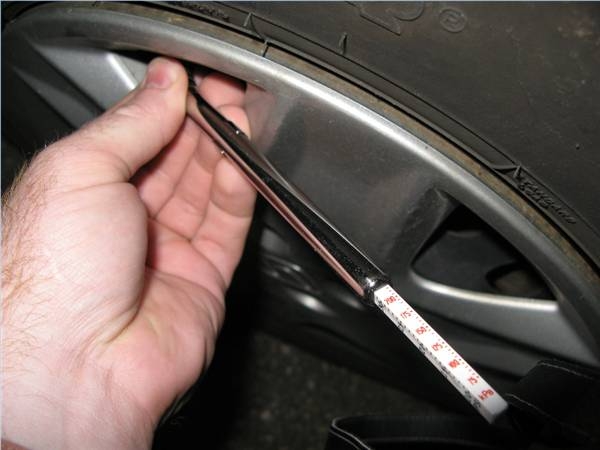
To understand how a tire pressure gauge works, it is first necessary to understand the parts of a tire pressure gauge. There is the head, which couples with the valve stem from the tire. A hollow tube makes up the bulk of the gauge. Inside that tube is a lightly oiled piston and a spring.
The spring is perhaps the most important part of the tire pressure gauge. This spring provides the resistance when the air rushes through the hollowed tube. The spring is designed to provide just enough resistance so that it accurately measures the air pressure pushing on the piston, located just above the spring. Without the spring, there is no way to accurately judge what the pressure in the tire may be.
The indicator is marked with numbers in order to indicate the pounds per square inch (psi). The last tick seen before the indicator disappears into the hollow tube is the correct reading for the air pressure within the tire. The indicator is not connected to the spring, but rather pushed outward by the piston. When the piston recedes, the indicator stays in the same position, indicating the maximum pressure that was exerted on the piston.
There are two other tire pressure gauge types. However, they all work the same way. There is some type of resistance used to measure the strength of the air pressure going through the gauge. In the case of digital gauges, for example, the main difference is an LCD readout. For more information about tire pressure gauges, see Additional Resources below.